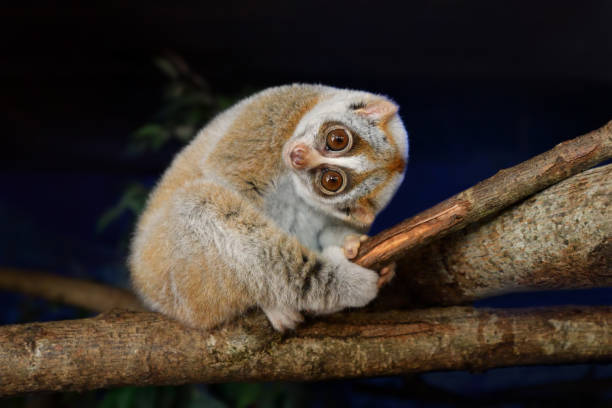The Intriguing World of the Slow Loris: A Closer Look
The slow loris is an enchanting creature that has captured the hearts of many with its unique charm. Yet, their mysterious nature and peculiar behavior make them a fascinating topic to explore. This article aims to delve deeper into the world of the slow loris, offering a comprehensive insight into their life, behavior, and the current challenges they face.

Unveiling the Slow Loris: A Brief History
The slow loris belongs to the Lorisidae family, with its existence recorded as far back as 45 million years ago. This nocturnal primate is native to South and Southeast Asia, known for its slow movement and unique facial markings. The term ‘loris’ originates from the Dutch word ‘loeris’, meaning ‘clown’, due to the animal’s peculiar facial expressions.
Understanding the Slow Loris Behavior
Unlike most primates, the slow loris leads a solitary life and is known for its deliberate, slow movements. They have a unique trait among primates - the ability to produce a toxin. When threatened, they combine the secretion from their brachial gland (near the elbow) with their saliva to create a toxic bite, which can cause serious harm to potential predators.
The Slow Loris in Modern Times: Current Challenges
Despite their adorable appearance and unique traits, slow lorises face a grim reality. Their population is declining due to habitat loss and illegal wildlife trade. They are often sold as pets, and their toxic glands are removed in a painful and dangerous process. This cruel practice, coupled with a loss of habitat, has led to slow lorises being listed as vulnerable or endangered by the International Union for Conservation of Nature (IUCN).
The Market Impact of Slow Loris Pet Trade
The slow loris pet trade has a significant market impact. A loris can cost anywhere between $1,500 to $5,000 on the black market. Despite international laws prohibiting the trade, high demand continues, driven by viral videos showcasing them as cute pets. However, this misleading representation hides the harsh reality of their life in captivity and the serious threats facing their survival.
The Way Forward: Conservation Efforts
To combat the decline in slow loris populations, several conservation efforts are underway. Organizations like the Little Fireface Project and International Animal Rescue work tirelessly to rescue, rehabilitate, and release slow lorises back into the wild. The key to their survival lies not only in these efforts but also in raising public awareness about the plight of these unique creatures.
In conclusion, the slow loris, with its intriguing past and peculiar traits, offers a fascinating glimpse into the world of primates. However, their survival hinges on our ability to protect their habitat and stop their illegal trade. As we continue to learn more about these fascinating creatures, it is our responsibility to ensure that they thrive for generations to come.




